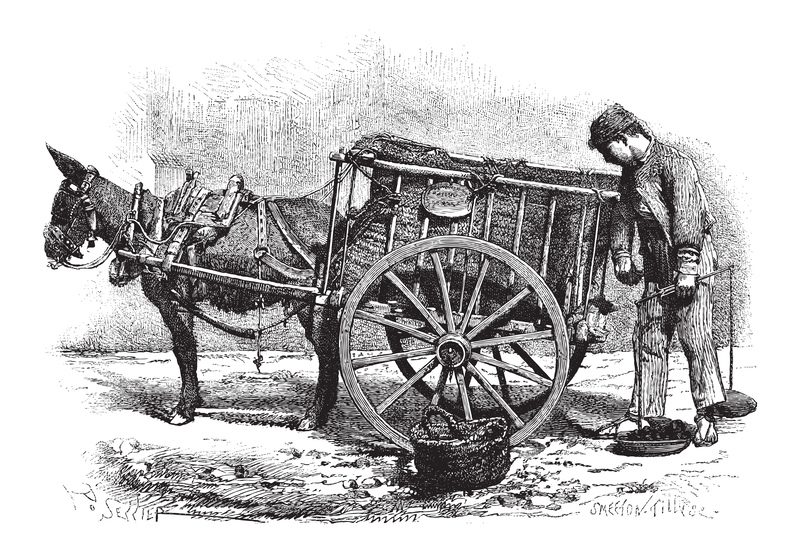Learning About the Signs of Hazardous Waste: A Comprehensive Guide
Hazardous waste poses significant risks to human health and the environment, making its identification and proper management crucial. Learning about the signs of hazardous waste is essential for businesses, homeowners, and anyone concerned about safety. This guide delivers an in-depth exploration of how to recognize hazardous waste, understand its risks, comply with regulations, and take appropriate action to manage these materials effectively.

What is Hazardous Waste?
Hazardous waste refers to any material--solid, liquid, or gaseous--that poses potential or substantial threats to public health or the environment. It commonly originates from industrial processes, medical facilities, laboratories, and even household products. Understanding the *definition* and *nature* of hazardous waste is the first step in identifying its signs.
- Chemical byproducts from manufacturing
- Expired or unused pharmaceuticals
- Solvents and paints
- Pesticides, herbicides, and garden chemicals
- Household cleaners with dangerous properties
- Batteries and electronic waste
Types of Hazardous Waste
The main categories of hazardous waste include:
- Ignitable wastes: Substances that can easily catch fire (e.g., solvents, gasoline)
- Corrosive wastes: Materials that can eat through metals and tissue (e.g., acids, caustics)
- Reactive wastes: Unstable substances prone to explosions or toxic reactions (e.g., peroxides, cyanides)
- Toxic wastes: Compounds harmful to human or animal health (e.g., mercury, lead, pesticides)
Why Recognizing Hazardous Waste is Important
Learning about the signs of hazardous waste is more than a matter of compliance--it's a public safety and environmental protection issue. Well-informed identification enables:
- Prevention of accidental exposure, poisoning, or injury
- Proper disposal, reducing soil, air, and water contamination
- Adherence to regulations (such as EPA, OSHA, and local agencies)
- Reduction of costly fines or remediation expenses
Key Signs of Hazardous Waste
1. Labeling and Symbols
One clear sign of hazardous waste is labeling. Manufacturers are required to indicate hazardous materials with recognizable symbols and warning labels. Watch for:
- The skull and crossbones symbol (toxic or poisonous)
- The flame (flammable or ignitable)
- The corrosion symbol (corrosive)
- Exploding bomb (reactive or explosive)
- Radiation pictograms (radioactive substances)
Additionally, words such as "Danger," "Warning," "Caution," or phrases like "Hazardous Waste" or "Toxic" are clear indicators.
2. Unusual Odors
Chemical, solvent-like, pungent, or unusual odors often mark the presence of hazardous substances. Some materials may emit sharp or acrid scents, reminiscent of ammonia, bleach, or rotten eggs. If you detect a chemical smell that seems unnatural or unusually strong, this is a warning sign of potential hazardous waste.
3. Abnormal Appearance
Hazardous waste can frequently be identified visually:
- Brightly colored liquids (neon-green, orange, or yellow)
- Unusual crystal formations, powder, or sludge
- Oily sheens on water or surfaces
- Corroded or deteriorated containers
- Excessive dust or residues around stored materials
Suspicious appearances, especially in an industrial or laboratory setting, should always prompt further investigation.
4. Physical Reactions
Exposure--even minimal--to certain hazardous wastes may cause:
- Skin irritation or burns
- Watery eyes, coughing, or difficulty breathing
- Headache, nausea, or dizziness
If employees or other individuals experience these symptoms near a waste storage or disposal site, it may indicate improper handling or undetected hazardous waste.
5. Unusual Environmental Effects
Unexpected changes in the environment often signal improper disposal or storage of hazardous waste:
- Dead vegetation or discoloration of grass/soil near storage areas
- Fish or wildlife fatalities in nearby water bodies
- Unexplained discharges, fumes, or stains from drains or containers
- Corrosion or staining on nearby objects and buildings
These signs demand immediate attention and should be reported to local environmental authorities.
Common Sources of Hazardous Waste
Understanding where hazardous waste is likely to be found improves your ability to identify it. The most common sources include:
1. Industrial and Manufacturing Facilities
- Metalworking fluids, solvents, and acids
- Process sludge and residues from chemical reactions
2. Automotive Shops and Garages
- Used oil, transmission fluids, and brake fluids
- Lead-acid batteries and cleaning chemicals
3. Laboratories and Medical Facilities
- Expired chemicals and reagents
- Pharmaceutical waste, sharps, and pathological materials
4. Households
- Paints, thinners, pesticides, and pool chemicals
- Batteries and e-waste (electronics)
Regulatory Framework for Hazardous Waste
In the United States and around the world, there are strict regulations guiding the handling, storing, transporting, and disposal of hazardous waste. Major regulatory bodies include the Environmental Protection Agency (EPA), the Occupational Safety and Health Administration (OSHA), and state or local agencies. Complying with these regulations is non-negotiable for businesses and advisable for individuals.
- EPA: Sets standards under the Resource Conservation and Recovery Act (RCRA).
- OSHA: Regulates workplace exposure and training.
- DOT: Safety requirements for hazardous materials transport.
Staying informed about these laws ensures safety and protects everyone involved.
Proper Storage and Disposal of Hazardous Waste
Recognizing the signs of hazardous waste is just the beginning. Proper handling must follow recognition:
Storage Tips
- Always use labeled, sealed, and compatible containers.
- Store away from direct sunlight, heat, and moisture.
- Prepare secondary containment in case of leaks or spills.
- Keep hazardous waste separate by type (don't mix incompatible chemicals).
- Maintain up-to-date inventory and records of all hazardous materials.
Disposal Tips
- Never pour hazardous waste down the drain or into the ground.
- Contact approved hazardous waste disposal facilities for pick-up or drop-off.
- Check for local or state-sponsored hazardous waste collection events.
- Always follow labeling and transportation rules for hazardous materials.
- Report dumping or unpermitted disposal to local authorities.
Proper disposal is not only a legal obligation, but also a responsibility to the community and environment.
Safety Measures When Dealing With Hazardous Waste
Once hazardous waste is discovered--thanks to identifying the signs of hazardous waste--implement crucial safety measures:
- Wear appropriate personal protective equipment (PPE) (gloves, goggles, respirators, etc.)
- Ensure good ventilation and avoid confined spaces.
- Follow established emergency and spill protocols.
- Limit access to storage areas to trained personnel only.
- Post warning signs and maintain clear labels on all storage units.
- Train all staff on proper identification, handling, and disposal procedures.
Safety first should always be the approach when dealing with hazardous substances.
Case Studies: The Cost of Ignoring Hazardous Waste Signs
Case 1: The Factory Spill
In a well-known incident, a factory ignored unusual odors and minor leaks from a solvent storage room. Eventually, vapors accumulated, causing workers to experience headaches and skin irritation. When a spark ignited the fumes, an explosion caused injuries and extensive property damage. Regular inspections and attention to hazardous waste signs could have prevented the disaster.
Case 2: Improper Household Disposal
A suburban neighborhood suffered after a resident poured old pesticides down the storm drain. The result was the death of local fish and contamination in the water supply. The failure to recognize hazardous waste signs and follow disposal guidelines led to legal repercussions and remediation costs.

What to Do If You Encounter Hazardous Waste
If you ever notice the signs of hazardous waste in your community or workplace, follow these steps:
- Evacuate the immediate area if you sense danger or if fumes are present.
- Do not touch, inhale, or attempt to clean hazardous substances on your own.
- Alert your supervisor, management, or the property owner immediately.
- Contact local environmental or public health authorities.
- Provide information on the type of waste, its location, and observed signs.
Quick reporting minimizes risks and ensures a swift, professional response.
Conclusion: Stay Informed, Stay Safe
Learning about the signs of hazardous waste is a vital skill for everyone--from industrial workers to homeowners. Recognizing warning labels, odors, physical symptoms, and environmental impacts allows you to act quickly and responsibly. Remember, hazardous waste can exist in unexpected places, and careful observation paired with proper handling is key to keeping people and the environment safe.
Stay vigilant, educate yourself and those around you, and always adhere to local regulations when dealing with hazardous waste. Being proactive could save lives, protect natural resources, and prevent costly accidents.
Further Resources
By understanding and responding to the signs of hazardous waste, you are contributing to a safer, cleaner, and more responsible society.